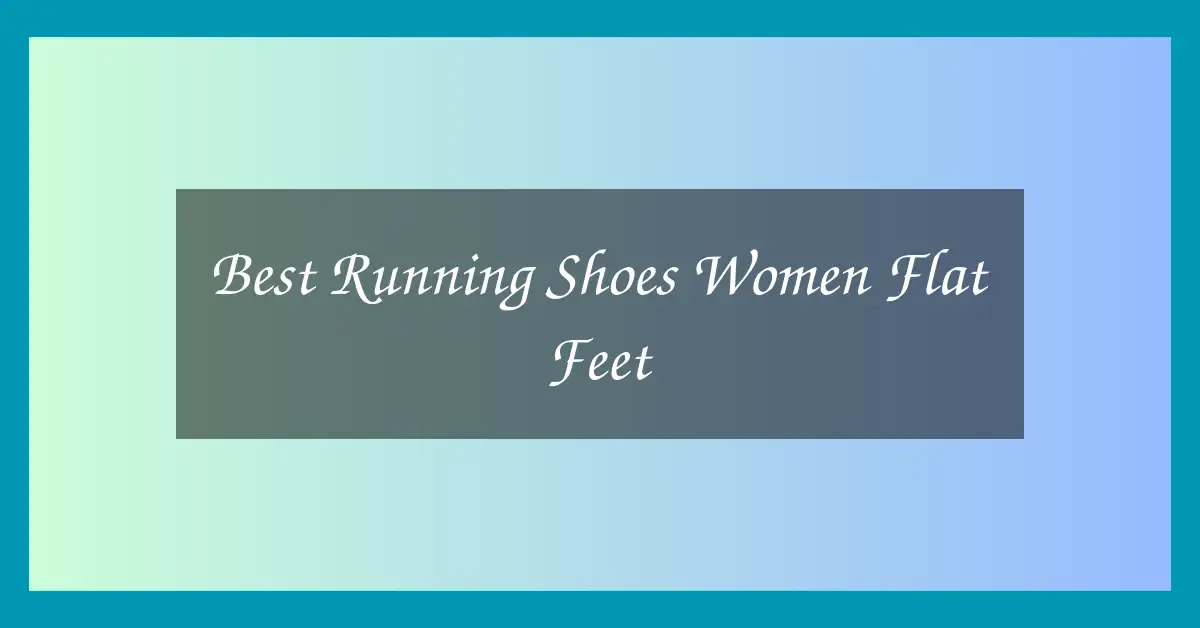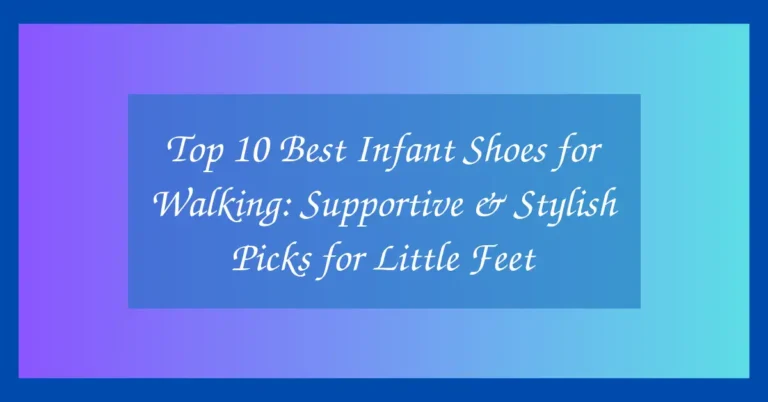Best Running Shoes Women Flat Feet
Finding the best running shoes for women with flat feet is essential for comfort, performance, and injury prevention. Flat feet can cause overpronation, leading to stress on the ankles, knees, and hips. The right shoes provide arch support, stability, and cushioning, making a significant difference in every stride.
This comprehensive guide explores the top running shoes specifically designed to meet the needs of women with flat feet. Whether you’re a seasoned runner or just starting, these shoes will offer the support and comfort needed to keep your feet healthy and your runs enjoyable.
Best Running Shoes Women Flat Feet
1. Brooks Ariel ’20
The Brooks Ariel ’20 is a reliable choice for women who need extra stability and motion control. Built with GuideRails® support, it helps to keep excess movement in check, reducing stress on joints. This shoe is especially beneficial for runners with severe overpronation due to flat arches.
The plush cushioning of DNA LOFT provides a soft, luxurious feel without compromising responsiveness. The engineered-mesh upper offers breathability while securing the foot comfortably. Its wide toe box also adds to the comfort, accommodating foot expansion during long runs.
Runners with flat feet often complain about foot fatigue, but the Ariel ’20 combats this with a full-length cushioning system. It also features a sturdy heel counter that provides additional support and stability during heel strikes. This makes it a dependable option for both daily training and recovery days.
Overall, the Brooks Ariel ’20 stands out as one of the most stable and supportive options available, ideal for flat-footed runners who want to stay injury-free.
Pros
- Excellent stability and motion control
- Comfortable plush cushioning
- Wide toe box for added comfort
Cons
- Heavier than most running shoes
- Bulky appearance
2. ASICS Gel-Kayano 30
The ASICS Gel-Kayano 30 is a premium stability shoe that caters exceptionally well to runners with flat feet. With 4D Guidance System™ technology, it provides adaptive stability by adjusting to the foot’s movement in real-time. This is particularly helpful for preventing overpronation during longer runs.
The combination of FF BLAST™ PLUS ECO cushioning and PureGEL™ technology ensures a smooth, soft, and responsive ride. The midsole is crafted to deliver comfort across various distances, whether you’re going for a short jog or a half-marathon. Breathable mesh in the upper keeps feet cool and supported.
ASICS also added eco-friendly materials in the build, aligning comfort with sustainability. The shoe is slightly more cushioned than its predecessor, which benefits runners needing shock absorption due to flat arches. The toe box is snug, but still flexible enough for natural movement.
Ideal for everyday training, the Gel-Kayano 30 is a solid investment for those seeking structured support without sacrificing performance.
Pros
- High-tech adaptive stability system
- Eco-conscious cushioning
- Soft, breathable upper
3. Saucony Guide 16
The Saucony Guide 16 is a reliable companion for moderate overpronators seeking lightweight support. Built with PWRRUN foam cushioning, it delivers a soft and responsive underfoot feel that’s ideal for long-distance runs. The shoe’s FORMFIT design hugs the foot for a secure, custom fit.
Flat-footed runners will appreciate the medial post, which helps correct gait and maintain alignment. It’s not overly stiff, making it great for those transitioning into stability shoes. The engineered mesh upper ensures airflow while adding to the overall comfort.
This model is also relatively lightweight for a stability shoe, making it a good choice for runners who value speed and agility. Despite its low weight, it doesn’t compromise on support and structure. The heel counter locks the foot in place, reducing slippage during movement.
Perfect for daily training, the Saucony Guide 16 is a versatile, dependable shoe that addresses flat-footed runners’ unique needs.
Pros
- Lightweight for a stability shoe
- Responsive cushioning
- Breathable and supportive upper
Cons
- Might not offer enough support for severe overpronators
- Narrow fit for some foot shapes
4. HOKA Arahi 6
The HOKA Arahi 6 is an excellent blend of cushioning and support, making it a go-to for flat-footed women seeking a lightweight stability shoe. It uses J-Frame™ technology to guide the foot without being overly intrusive, perfect for moderate overpronation.
HOKA’s signature early-stage Meta-Rocker geometry promotes a smooth heel-to-toe transition, easing stress on the arch and ankle. The EVA midsole offers balanced cushioning that feels plush yet responsive. A reinforced heel counter adds a sense of structure and control.
The Arahi 6 maintains a surprising level of comfort while being lighter than many traditional stability shoes. Its engineered mesh upper is breathable and secure, with a padded tongue and collar enhancing the overall step-in feel.
This model works well for recovery runs and long-distance efforts alike, making it a versatile choice in any rotation.
Pros
- Lightweight yet stable
- J-Frame support without stiffness
- Comfortable rocker design
Cons
- Minimal arch support for severe flat feet
- Durability could be improved
5. New Balance Fresh Foam X 860v13
The New Balance Fresh Foam X 860v13 is a highly cushioned stability shoe tailored to women with flat feet. Designed for daily miles, it features Fresh Foam X midsole technology that delivers ultra-soft landings and energy return. The medial post helps curb overpronation without compromising flexibility.
The upper is made from engineered mesh, offering breathability and structure. The heel is secure and stable, giving flat-footed runners confidence with each stride. Whether you’re walking, jogging, or tackling tempo runs, this shoe holds up exceptionally well.
While some stability shoes feel stiff, the 860v13 balances comfort and control effectively. The dual-density foam allows smoother transitions and supports a natural gait cycle. This makes it ideal for runners who struggle with foot fatigue.
If you’re seeking plush support in a durable design, the Fresh Foam X 860v13 offers comfort and reliability in every step.
Pros
- Soft, responsive cushioning
- Supportive for mild-to-moderate overpronation
- Durable and breathable upper
Cons
- Feels bulky for speed training
- Break-in period may be required
Would you like me to continue with reviews 6 through 10?
6. Nike Structure 25
The Nike Structure 25 is engineered for stability and everyday comfort, making it an excellent option for women with flat feet. It incorporates a high-stack foam midsole with a supportive structure designed to guide the foot and control overpronation. The medial post system subtly corrects the gait cycle without feeling intrusive.
Zoom Air cushioning in the forefoot offers a springy toe-off, while the heel is stable and cushioned for a smooth landing. The wider forefoot base provides extra surface contact, which enhances stability for flat-footed runners. A supportive upper with Flywire cables keeps the foot secure without causing pressure points.
This model has a breathable mesh design that balances structure and comfort. It also has a padded collar that cradles the ankle, ideal for long runs and extended wear. The shoe remains durable through high-mileage use, thanks to the sturdy outsole and reinforced upper materials.
Overall, the Nike Structure 25 offers an excellent mix of support, energy return, and comfort for women who need structured running shoes without a clunky feel.
Pros
- Stable design for overpronators
- Comfortable for long distances
- Secure lockdown and breathable upper
Cons
- Heavier than previous versions
- Less flexible than neutral shoes
7. Mizuno Wave Inspire 19
The Mizuno Wave Inspire 19 is a dependable stability shoe for flat-footed runners who need firm arch support. It features the signature Mizuno Wave Plate, which offers structured support while absorbing shock efficiently. The design minimizes inward rolling of the foot, helping to maintain proper alignment.
The Enerzy foam midsole ensures responsive cushioning underfoot, suitable for both short runs and long distances. The engineered mesh upper delivers excellent breathability and holds the foot in place securely. A soft, padded collar and tongue add to the overall comfort during extended wear.
What stands out is how the shoe blends support with a lightweight feel, ideal for runners who want to avoid a bulky shoe. The heel wedge provides extra support for rearfoot strikers, while the outsole’s grip holds up well on various terrains. Flat-footed runners who deal with ankle or knee issues will benefit from its balanced motion control.
Offering a mix of classic stability and modern comfort, the Wave Inspire 19 is a solid choice for those in need of all-around support and performance.
Pros
- Wave Plate provides structured support
- Responsive and cushioned ride
- Good grip and heel stability
Cons
- Break-in period may be needed
- Arch support may feel too firm for some
8. Altra Provision 7
The Altra Provision 7 offers a unique solution for flat-footed runners with its zero-drop platform and natural foot-shaped toe box. It allows for a more natural stride while still offering guidance and support where needed. The GuideRail™ system provides medial support for overpronation without forcing the foot.
This shoe promotes better posture and balance with its zero-drop design, encouraging runners to land more evenly across the foot. Altra’s EGO™ midsole delivers cushioning that feels soft yet bouncy, suitable for long runs and recovery days alike. The roomy toe box lets toes splay naturally, which helps reduce pressure on flat arches.
The Provision 7 also includes an updated upper that is both flexible and secure. It’s ideal for runners who dislike the rigid feel of traditional stability shoes. Despite its minimalist appearance, the shoe provides enough guidance to support flat-footed runners comfortably.
If you’re looking for a stability shoe that encourages natural movement and a grounded feel, the Altra Provision 7 is a refreshingly different option.
Pros
- Zero-drop encourages natural running
- Roomy toe box reduces pressure
- Lightweight with adaptive support
Cons
- Not ideal for those new to zero-drop shoes
- Less arch support than traditional stability models
9. On Cloudflyer 4
The On Cloudflyer 4 combines Swiss engineering with sleek design and functional support, making it a top pick for women with flat feet. This shoe features CloudTec® cushioning, which delivers a soft, yet stable ride. Helion™ foam in the midsole improves shock absorption and energy return for a responsive feel.
The wider platform and dual-density support system offer reliable stability for overpronators. Despite its structured support, the Cloudflyer 4 maintains a lightweight profile, allowing runners to enjoy smooth, quick transitions. The heel counter and midfoot cage improve lockdown and reduce foot slippage.
The engineered mesh upper enhances ventilation and hugs the foot securely. Added comfort elements include a plush tongue and padded collar, making it ideal for extended sessions or recovery runs. With a polished aesthetic, it’s also a favorite among style-conscious runners.
The Cloudflyer 4 is perfect for runners looking for balanced support, innovative design, and a unique running experience that caters to flat feet.
Pros
- CloudTec cushioning is soft yet responsive
- Wider base adds stability
- Sleek and stylish design
Cons
- Less arch support than traditional stability shoes
- Higher price point
10. Adidas Solar Glide ST 5
The Adidas Solar Glide ST 5 provides structured cushioning and reliable support for flat-footed runners. Featuring Boost™ technology, the shoe delivers energy return and a cushioned feel on impact. The dual-density midsole and medial post help guide the foot for a stable stride.
The Torsion System in the outsole improves midfoot integrity, making transitions smoother and more efficient. A breathable mesh upper wraps around the foot snugly while allowing airflow to prevent overheating. The Solar Glide ST 5 is built for long-distance comfort, making it ideal for daily runs and endurance training.
What sets it apart is the blend of stability and propulsion. The supportive heel counter improves alignment, while the forefoot offers bounce and flexibility. Runners with flat feet will appreciate the medial arch support, which reduces strain during repetitive motion.
For those looking for a well-rounded shoe that supports flat feet without sacrificing speed or energy, the Solar Glide ST 5 is a top-tier choice.
Pros
- Boost cushioning offers high energy return
- Stable and responsive ride
- Great for long distances
Cons
- Heavier than some competitors
- Takes time to break in
Would you like me to generate the comparison table, buying guide, FAQ, and verdict section next?
| Product Name | Best For | Key Feature | Weight | Arch Support |
|---|---|---|---|---|
| Brooks Ariel ’20 | Maximum stability | GuideRails® support | Heavy | Strong |
| ASICS Gel-Kayano 30 | All-day comfort | 4D Guidance System™ | Moderate | Strong |
| Saucony Guide 16 | Daily training | FORMFIT upper | Lightweight | Moderate |
| HOKA Arahi 6 | Recovery runs | J-Frame™ support | Light | Moderate |
| New Balance 860v13 | Soft cushioning | Fresh Foam X | Moderate | Strong |
| Nike Structure 25 | Structured support | Zoom Air unit | Heavy | Moderate |
| Mizuno Wave Inspire 19 | Heel support | Wave Plate tech | Moderate | Firm |
| Altra Provision 7 | Natural stride | Zero-drop design | Lightweight | Minimal |
| On Cloudflyer 4 | Stylish performance | CloudTec® cushioning | Lightweight | Moderate |
| Adidas Solar Glide ST 5 | Long-distance runs | Boost™ midsole | Heavy | Strong |
Best Running Shoes Women Flat Feet: Buying Guide
Understand Flat Feet and Overpronation
Flat feet, also known as fallen arches, occur when the arch of the foot collapses, allowing the entire sole to touch the ground. This condition often leads to overpronation, where the foot rolls inward excessively during walking or running. It’s essential to select shoes that offer stability features and adequate arch support to correct this inward motion and prevent strain on joints and muscles.
Look for Stability Features
Stability shoes are designed to reduce overpronation by using medial posts, GuideRails®, or similar technology. These features help guide the foot into a proper alignment without being overly rigid. Runners with flat feet benefit from this added control, especially during long runs when fatigue can affect gait patterns.
Prioritize Arch Support
Flat-footed runners need extra attention to arch support. A well-supported arch prevents excessive strain on the plantar fascia and lower limbs. Shoes that integrate firm midsoles, dual-density foam, or structural inserts help in reinforcing arch support, keeping the foot stable through each stride.
Cushioning for Shock Absorption
Impact absorption is crucial for runners with flat feet, as their arches don’t provide natural shock absorption. Look for shoes with plush midsoles like Fresh Foam, Boost™, or CloudTec® that can cushion landings and reduce stress on knees and hips. Balanced cushioning enhances comfort while maintaining support.
Fit and Toe Box Width
Proper fit is vital. A shoe that’s too tight can increase foot fatigue, while one that’s too loose reduces support. Flat-footed runners may benefit from a wide toe box that allows natural toe splay. Brands like Altra and Brooks offer options with roomy fronts without sacrificing structure elsewhere.
Consider the Type of Running
The ideal shoe also depends on the type of running you do. Long-distance runners need high cushioning and support, while short-distance runners may prefer a lightweight model with moderate control. Always match your shoe’s feature set to your running goals for the best performance and injury prevention.
FAQ
Are stability shoes always the best choice for flat feet?
Stability shoes are generally recommended for flat feet due to their ability to control overpronation. However, the best shoe depends on individual gait, arch severity, and comfort preferences. Some runners may prefer mild support or zero-drop shoes with natural guidance systems.
Can I run with flat feet without custom orthotics?
Yes, many high-quality running shoes offer enough built-in support to accommodate flat feet. Unless you have a severe case or specific pain, you may not need custom orthotics. Shoes like the Brooks Ariel or ASICS Kayano are designed with features that mimic orthotic benefits.
How do I know if I’m overpronating?
Common signs of overpronation include excessive wear on the inner edges of shoes, inward rolling of the ankles, or knee pain after runs. A gait analysis at a running store or podiatrist can confirm this. Overpronation is common among people with flat feet and should be addressed with supportive footwear.
Is zero-drop footwear safe for flat feet?
Zero-drop shoes, like those from Altra, can be beneficial for some flat-footed runners by promoting natural posture and foot alignment. However, transitioning to zero-drop requires time and may not suit everyone, especially if you need substantial arch support. Start slowly and monitor for any discomfort.
What’s the difference between arch support and cushioning?
Arch support refers to the structure that holds up the arch and prevents collapse during movement, while cushioning absorbs impact and enhances comfort. Good flat-foot running shoes combine both support to stabilize and cushioning to protect from repetitive shock during running.
How long do running shoes for flat feet last?
Most running shoes last between 300–500 miles, depending on usage and build quality. Shoes used by runners with flat feet may wear out faster in the medial section, especially if overpronation is not fully controlled. Monitor wear patterns and replace shoes when support diminishes or discomfort arises.
Verdict
Choosing the best running shoes for women with flat feet is all about support, comfort, and fit. Each shoe listed here brings unique strengths from motion control to cushioned stability. By understanding your individual needs and matching them with the right features, you can run with confidence and reduce your risk of pain or injury.







